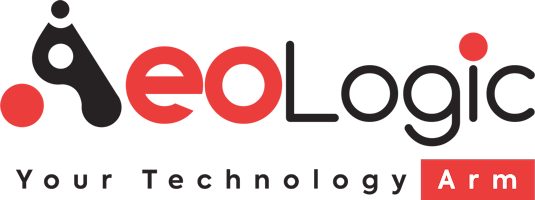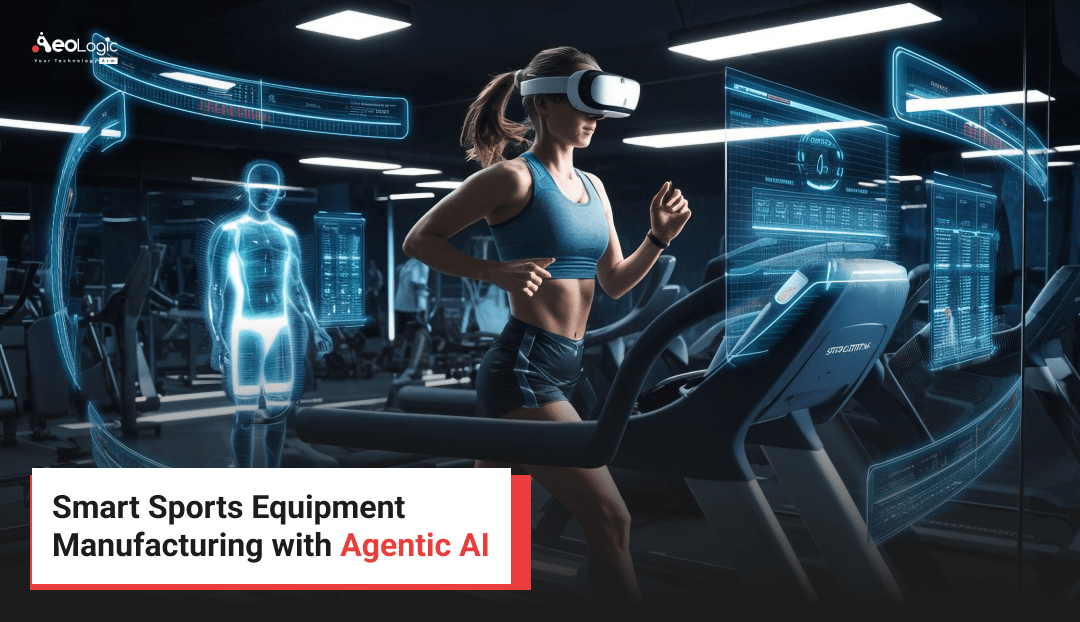The shift in sports equipment due to the development of artificial intelligence (AI) is a revolution that the market is experiencing. The introduction of agentic AI, an autonomous goal-orientated system through which a decision could be made and to adapt to dynamic environments, is one of the most promising developments. This blog spells out the realm of agentic AI in transforming manufacturing technology used in the production of smart sports equipment that guarantees quality products, streamlined production systems, and provision of the customised athletic equipment to the users. We are going to trawl the technology applications, advantages, pitfalls and all the possibilities of the technology, emphasising what it has to offer in generating new high-performing sports gear.
What is Agentic AI?
The term ‘agentic AI’ describes the intelligent systems capable of operating independently to realise certain goals. In contrast to the traditional AI that used to be either rules-based or relied on supervised learning, agentic ai solutions. systems are proactive and can rationalise, plan and adapt to new data in real-time. These are systems that behave like human beings in decision-making; they explore their environment to maximise results. Agentic AI serves as a virtual colleague in sports equipment production and monitors complex business processes, makes predictions about what should be repaired or replaced, and prepares products based on the needs of individual athletes. Deriving benefits from the machine learning, reinforcement learning and natural language processing, the agentic AI provides even greater efficiency and innovation with sports equipment ai,.
The Role of Agentic AI in Sports Equipment Manufacturing
The sports equipment industry is one of the most competitive industries where manufacturers are fighting to have products that are durable, offer high performance and are sustainable. They are some of the demands that can be met by agentic AI, which could be implemented to simplify operations and make better decisions across the production lifecycle. This is the case of key applications of agentic AI in the field below.
Design Optimization and Prototyping
You have to find the right balance between the requirements of a particular athletic equipment, such as a tennis racket, golf club, or even a running shoe. The design process is speeded up with agentic AI that would go through large amounts of data, which can include material properties, athlete feedback, and biomechanical data.
- Generative Design: Computational algorithms of agentic AI can generate many design iterations by weight, aerodynamics and strength optimisation. To take a simple example, in bicycle manufacturing, AI can recommend frame geometry to minimise drag without loss of stiffness. These solvers search thousands of configurations in a matter of minutes, which is way beyond the traditional design techniques.
- Rapid Prototyping: Agentic AI can accelerate the process of manufacturing and testing a prototype owing to collaboration with 3D printing technology. The AI system performs evaluation of prototypes, as in the case of stress resistance of a hockey stick, and gradually improves design again and again, minimising development time and expenditure. Such a recursive cycle guarantees the deletion of less successful designs only to leave the best designs in production.
- Personalisation: Agentic AI makes equipment custom-sized to the athlete. To give an example, it is possible to use AI to process the data of a golfer and suggest the club with a given shaft bending and head weight. This customisation goes to mass customisation, where robot intelligence plans equipment for small markets, like making adaptable sports equipment for physically impaired athletes.
Smart Sports Equipment Manufacturing Processes
Agentic AI contributes to the work of factories by adding smart manufacturing into the equation, a data-based method that will make the factory efficient, high-quality, and sustainable.
- Real-Time Process Monitoring: AI agents are used to monitor production lines by means of IoT sensors, where failures or breakages of the equipment or other material malfunctions are detected. In the manufacturing of the soccer balls, AI guarantees uniformity of stitches and adhesion of materials which enhances reliability of the product. The systems also have the capability of setting and adjusting parameters dynamically, like recalibrating a device in order to correct small errors.
- Predictive Maintenance: Agentic AI uses sensor readings taken by machines to determine how close equipment is to failure and sets up maintenance without notification. As an example, in the production of treadmills, artificial intelligence will be able to recognise wear on the motors of a conveyor belt, thus avoiding downtime. This practice prolongs the life of manufacturing equipment and lessens the cost of repair.
- Optimised Resources: AI enhances the utilisation of material resources, energy and labour force. During the manufacturing of the composite material used in making hockey sticks, the AI is used to calculate the exact amount of material used that will reduce their wastage without compromising their strength. It also reduces power usage by scheduling the intensive power-fed tasks at low usage times.
Quality Control and Testing
It is important to make sure that the sporting gear is subjected to a high level of safety and performance. Agentic AI also improves quality control since inspections and testing are automated.
- Computer Vision: AI-based computer vision technologies, a key component of sports equipment AI , are used to examine products and detect flaws, such as cracks in baseball bats or uneven surfaces in tennis balls. These systems outperform human inspectors in both speed and accuracy, identifying defects that may otherwise go unnoticed.
- Performance Testing: Leveraging sports equipment AI , manufacturers can replicate real-life scenarios to evaluate the durability and effectiveness of equipment. For example, AI simulations can test the impact forces on a football helmet to ensure it meets strict safety standards. It can also simulate environmental conditions like humidity or temperature to verify reliable performance under diverse usage settings.
- Feedback Integration: AI agents capture and scan the scorecards given by the rivals and consumers and determine ways of improvement. As an example, when customers comment on the cushioning of the running shoes, it can be used in updating materials in the following versions and make a loop of improvement.
Supply Chain Optimization
Global sports equipment markets are dependent on far-flung and multicontinental, sprawling supply chains. Using the agentic AI ( agentic ai solutions )will make the logistics more efficient, save money, and be faster.
- Demand Forecasting: Robots forecast the market trends and consumer demand based on social media, sales, and economic indicators. As an example, AI would be able to predict an outbreak of wellness trends, and manufacturers would know in advance whether to increase or decrease output.
- Inventory Management: AI helps in optimising inventory, which means that the raw material and finished goods become available at the right time. In the sneaker industry, AI can facilitate the provision of the raw materials; that is, leather, rubber and textiles to complement the agendas of production to decrease storage expenses.
- Supplier Collaboration: Agentic AI is used in collaborating with the suppliers so that an agreement can be done, contracts can be negotiated and disputes can be settled automatically. To give an example, when one of the suppliers fails to provide carbon fibre to be used in bicycle frames, AI can find alternative suppliers or change production timing to reduce interference.
Sustainability and Circular Manufacturing
Sustainability is increasingly becoming an issue in the sports equipment industry, with the consumers requiring more eco-friendly products. Agentic AI can contribute to sustainable production as it will minimise waste and increase the principles of a circular economy.
- Material Selection: AI finds eco-friendly materials, which may be recycled plastics or bio-composites, and performs within the set standards. As one example, AI can be used to suggest plant-based foam in the midsoles of running shoes instead of using petroleum-based products.
- Reduction of Wastes: AI ensures that no wastes are incurred through maximisation of production processes and cutting patterns. With respect to wetsuit production, AI optimises neoprene sheets used, resulting in a 20 per cent reduction of scraps in certain cases.
- Product Lifecycle Management: AI traces equipment during its lifetime and enables the process of recycling and refurbishment. As an example, together with repurposing used sporting equipment, AI will be able to handle the used sports equipment, e.g., refurbishing tennis rackets and selling them, thereby cutting down on landfill waste.
Benefits of Agentic AI in Sports Equipment Manufacturing
The combination of agentic AI has many benefits that can give manufacturers an upper hand in the highly dynamic market.
1. More Efficiency: AI provides a more efficient process by automating tasks and doing it faster at less time and cost. This enables manufacturers to expand with less effect on the quality.
2. Improved Product Quality: As a result of insight gained through data, AI would guarantee high-performance, safety and durability product quality of equipment.
3. Custom Offers: AI makes it possible to create mass-customised products so that manufacturers can follow the preferences of individual athletes and achieve a competitive advantage.
4. Sustainability Benefits: Sustainable resources maximisation and sustainable material selection using AI, which meets people’s requests in purchasing environmentally friendly products.
5. Quickness and Ability to Adapt: Agents AIs can sense any change encountered in the market and react promptly to help a manufacturer shift its strategies or launch new products in no time.
Challenges and Solutions
Although agentic AI has enormous prospects, its implementation in the sports equipment-making industry is accompanied by some challenges that need to be solved.
1. Large set-up prices: Setting up AI systems is expensive in terms of hardware, software and training. These upfront costs can become unaffordable for small manufacturers. Solution: The costs can be offset by partnerships with AI providers or government grants on digital transformation. AI solutions based on the cloud will also save using costly on-premise infrastructure.
2. Data Privacy and Security: AI requires the privacy of sensitive data, including biometric information about an athlete and design confidentiality. Companies should not underestimate cybersecurity to guarantee the safety of this information. Solution: End-to-end encryption and adherence to data protection resources (e.g., GDPR) protect the sensitive data.
3. Workforce Transition: Automation of duties means that some of the jobs can be replaced, and manufacturers need to retrain their employees for the jobs more compatible with AI systems. Solution: Upskilling is the way to go (for example, teaching the workers how to use AI systems or work on creative design), adding fluidity to the change.
4. Ethical Considerations: Personalisation based on AI raises certain ethical concerns, including equitable access to individualised equipment and preventing discrimination among AI algorithms. Resolution: Fairness is encouraged through regular auditing of AI models to eliminate bias and pricing models that are transparent.
5. Integration Complexity: AI might be complicated to integrate into the existing manufacturing systems, which may involve planning and technical skill. Solution: Work gradually with pilot projects and cooperation with integration specialists of AI can reduce the disturbance.
Case Studies: Agentic AI in Action
To understand the effects of agentic AI, let us have one practical application of agentic AI in the sports equipment manufacturing.
Case Study 1: Adidas and Speedfactory
The agentic use of AI has been adopted at Adidas in the Speedfactory project, which is a massively automated and streamlined manufacturing denomination. In the manufacturing of sneakers, AI agents manage the manufacturing process as well as make optimum use of its materials by synergising the robotic arms to assemble sneakers. The AI will design shoes using consumer data to suit local tastes, which may be a colour combination or a fitting. This ends up in a quicker time-to-market and less environmental load because of the localised manufacturing that may save up to 30% of transportation-related emissions.
Case Study 2: Wilson and Smart Basketball
Wilson collaborated with artificial intelligence designers to prepare a smart basketball with sensors. Agentic AI can process the information provided by such sensors to give the athletes immediate feedback regarding shooting precision and ball flight. During the production procedure, AI guarantees that the sensors are positioned properly and checks how the ball is going to work in different settings, including the surfaces of courts. This invention has contributed to the name of Wilson as a specialist in sophisticated sportswear, as the number of smart basketballs is increasing steadily.
Case Study 3: Callaway and Golf Club Customization
Callaway relies on agentic AI in order to provide customised golf clubs. AI studies the swing data of a golfer who was fitted with motion sensors and advises a set of clubs. With AI, these custom clubs become optimised throughout the factory, and weight distribution and material used are on point. This strategy has increased consumer contentment, as custom-made clubs constitute an increasing portion of the revenue of Callaway.
Emerging Trends in Agentic AI for Sports Equipment Manufacturing
The emergence of the agentic AI and its expansion are now creating new tendencies in its automation of the industry of sports equipment manufacturing:
1. Wearables: AI is allowing the smooth integration of smart wearable devices with sports equipment. As an indication, AI capability may be used to connect running shoes with wearable fitness devices to inform a user during the training process when their stride is most efficient.
2. Autonomous Factory Ecosystems: Whole factories are emerging as AI-driven ecosystems, where agentic AI runs all parts of the production process, designing, manufacturing, shipping, and releasing with little to no human touch. This tendency is observed in pilot projects of such brands as Nike.
3. Cross-Industry Cooperation: The sports equipment manufacturing are collaborating with AI companies, automobile manufacturers, and aerospace industries to exchange experience. An example is that aerospace AI methods are being used to optimise the use of carbon fibre in cycle gear.
4. Live consumer engagement: AI chatbots and virtual assistants are helping manufacturers communicate directly with consumers and receive feedback, as well as provide customisation services on demand. This enhances brand loyalty as well as determines the product development.
Conclusion
The sports equipment manufacturing industry is being transformed through agentic AI that is enhancing efficiency, quality and innovation. AI also aids manufacturers to cater to demands of modern consumers and athletes by optimising a design and making sustainable production. As much as the shortcomings, including cost, data security and workforce transitions, are present, a strategic approach such as partnerships, upskilling and phased implementation can counter such challenges. The prospect of smart sports gear looks promising, and agentic AI ( agentic ai solutions )will take the new manner of the more individualistic, eco-friendly, and flexible industry.

Passionate about breaking down complex tech into simple ideas. Covers everything from AI and software development to gadgets and emerging tech trends.






